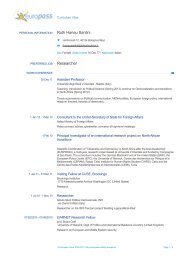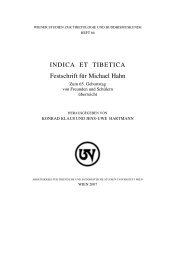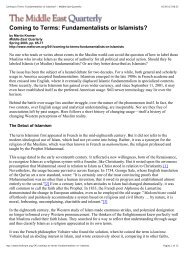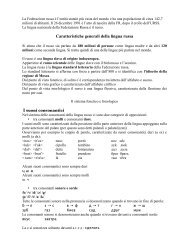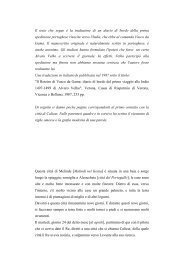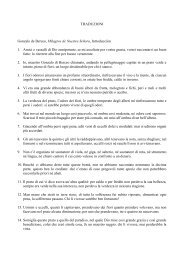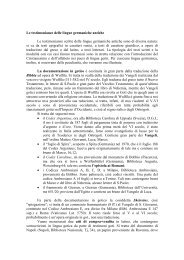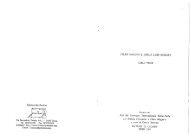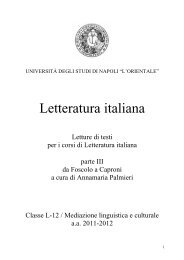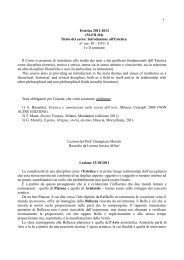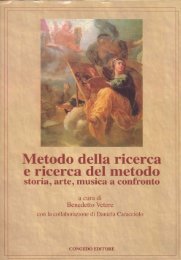Create successful ePaper yourself
Turn your PDF publications into a flip-book with our unique Google optimized e-Paper software.
worlds, that is, of all the realities as an indistinct whole. With vicfira this<br />
vision is directed towards particular realities, which are seen in their<br />
individuality, but always in a non-conceptual way. Following the phase<br />
characterized by vitarka and view'a, pIiti and sukha correspond<br />
respectively to mental tranquillity and to physical and psychological<br />
relaxation (prasrabdhl)46. The last phase is a non-conceptual and non-dual<br />
kind of concentration on the universal image (vi§vabimba) arisen at the end<br />
of the signs. In it, the polarities of perceiver and perceivable reality vanish.<br />
3) Restraint of the breath (priU;Jayama), the third limb of the yoga,<br />
consists of arresting the left and right courses of the vital breath and<br />
making it enter into the central channel, which in Buddhist tantras is<br />
usually called a vadhatf 7 .<br />
Two methods are described. The first consists of adamantine muttering<br />
(vajrajapa): according to the Kalacakra teachings it consists of the<br />
repetition of the syllable OIp. during inhalation, the syllable haIp. during<br />
retention, and the syllable alJ during exhalation (cf. G, fo1. 12b6_7)48. The<br />
second method consists of hafhayoga: the vital breath is violently pushed<br />
into the central channel once the bodhieitta has been arrested in the lotus of<br />
the wisdom (see below, pp. 270-71).<br />
46 See ADhK VIII, 9 (ed., p. 1142). In the first two dhyiinas, sukha is defined with the<br />
word prasrabdhi. Cf. also Al1haviniscayasiltranibandhana, ed., p. 180. PIiti is called<br />
sallmanasya (see trans. L. de La Vallee Poussin, pp. 150-1). See below G, fol. 15a2_3; cf.<br />
SUT (Gnoli-Orofino 1994: 214).<br />
47 The disposition of the channels (niirji), which are imagined in the human body and in<br />
which the vital breath flows, has recently been the object of study (Gnoli-Orofino 1994;<br />
Orofino 1996; Cicuzza-Sferra 1997: 122-5). The principal concepts that have to be kept in<br />
mind are summarized here: 1) the three principal narjis change position above and below<br />
the navel; 2) the terms pral}a and apiina (in the LKC, HTPT, etc.) sometimes have a<br />
technical meaning and denote respectively the breath that flows above and below the navel;<br />
3) below the navel, the avadhiltI changes name according to the reality that it bears (cf. SU,<br />
50, 56); 4) the channels reflect a microcosm-macrocosm relationship. G. Orofino (1996:<br />
132) writes: "These channels are interconnected in a reiationship of wisdom and means,<br />
related to the male and female essence, semen and menstrual blood, in their tum<br />
differentiated into the standard Tantric Buddhist threefold division of body, voice and mind<br />
(kiiya, vak, citta), that is, from the most tangible to the most subtle level. Moreover,<br />
following a mal}rjaJa pattern, in their sublimated dimension each of them represents a<br />
Tathagata of the six families, related to the six aggregates, the six elements, the six sense<br />
organs, the six sense objects, the six action senses and the six actions. In this way the<br />
representation of the inner channels reflects a universal vision of microcosmic existence<br />
that is symmetrical with the outer macrocosm".<br />
48 On this practice, which is explained differently in the GS, see Dhargyey 1985: 137.<br />
30



